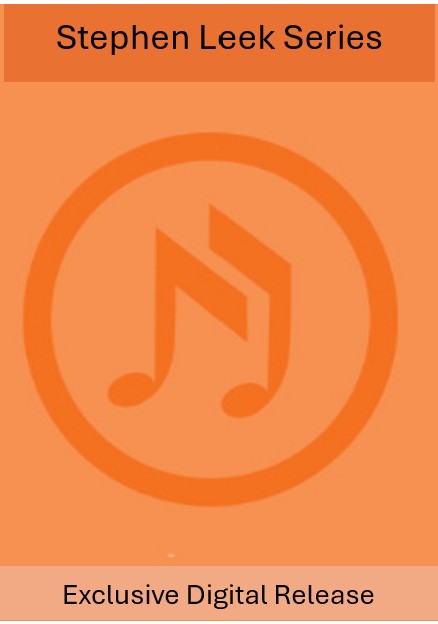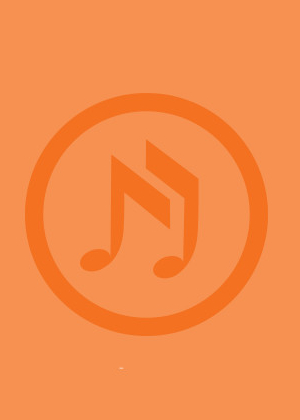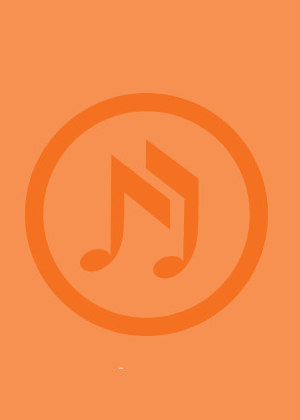| Title | Description | Composer | Voicing | ||
|---|---|---|---|---|---|
 |
Drovers – Morton Music Exclusive |
New Release – One of Stephen Leek’s exclusive digital releases directly through Morton Music – email admin@mortonmusic.com for details. Drovers captures the energy of the weary stockmen on horseback as they guide the stock through the dry Australian outback. It is part of a set of three pieces titled “Voices of a Land” which exists in numerous voicings with piano and also exists in a version for small instrumental ensemble. |
|||
 |
Evening Prayer |
New to Morton Music – digital copies are now available from RSCM Music Direct (UK) via the Other Countries link. The text of this piece is taken from the Evening Prayer of St Augustine, which asks for the protection and love of God whilst we are asleep, before calling for a blessing upon those who are suffering. While an a cappella performance is preferred, the minimal accompaniment gives harmonic support and can be used if desired in rehearsal or performance. |
|||
 |
Everyone Sang (SSAA) |
A delightful, joyous piece imbued with a sense of wonder throughout, Carl Crossin’s Everyone Sang is a fantastic addition to any concert programme. Incorporating birdsong with piano, cello and voices, this is a wonderfully atmospheric piece, and sure to be a great success. Highly recommended! |
|||
 |
Everyone Sang (SSAATB) |
A delightful, joyous piece imbued with a sense of wonder throughout, Carl Crossin’s Everyone Sang is a fantastic addition to any concert programme. Incorporating birdsong with piano, cello and voices, this is a wonderfully atmospheric piece, and sure to be a great success. Highly recommended! |
|||
 |
Finest Hour |
Without Churchill’s gifts of oratory, would the Allies have prevailed in World War Two? His speeches resonate these many decades later. This choral work, Finest hour, takes its music very explicitly from Churchill’s own composition – the melody and rhythm contained within his spoken intonation. The choir simply reproduces this melody and frames it in harmony, enhancing perception of what is already there though perhaps unnoticed. It is hoped that the music also heightens the emotions of this stirring speech. The conductor listens to a click track through earphones (it’s preferable that these are worn discreetly, and should be either in-ear earbuds or, ideally, bone conduction headphones where available, as these leave the ear free to listen). The work may be performed with video or audio; in both cases, the audio track contains the click track on the left channel and the speech on the right channel. The left channel should be sent only to the conductor’s headphones, and the right channel to front-of-house loudspeakers. It’s possible to perform the piece with a very simple speaker setup, such as using a single speaker placed amongst the singers. The recording above is performed by the University of Queensland Chamber Singers (2018), conducted by Graeme Morton. |
|||
 |
Five Songs For Treble Choirs |
Pieces by Stephen Leek, Michael Knopf, Kent Farbach, Robert Davidson and Mary Mageau on Australian themes. Publication was sponsored by the Australian National Choral Association. |
|||
 |
Foolin’ A-Round |
A delightful set of rounds for students in lower primary grades and upwards. These can be interpreted in the traditional way but Chris suggests many contemporary possibilities for each round. This publication includes a licensing agreement for copying within a single institution. |
|||
 |
Gloria In Excelsis |
New to Morton Music – digital copies are now available from RSCM Music Direct (UK) via the Other Countries link. An energetic rhythmic Gloria with alternative texts for Christmas and general use. Demonstration Recording: Arrangement for SAB choir. For SA arrangement, contact admin@mortonmusic.com. |
|||
 |
Good Christian Folk, Rejoice |
Uses the traditional text in a new and exciting setting for four-part chorus. Brass parts are available from the distributor. |
|||
 |
Goolay-Yali |
The third and final piece in Ancient Cries, this “pelican dance” has caught the imagination of young and adult treble choirs the world over. Wonderfully rhythmic with stunning climaxes and interesting vocal sounds. It is also not very difficult. A “must perform.” The recording is by Young Voices of Melbourne, directed by Mark O’Leary. |
|||
 |
Goolay-yali (SA) – Morton Music Exclusive |
New Release – One of Stephen Leek’s exclusive digital releases directly through Morton Music – email admin@mortonmusic.com for details.
|
|||
 |
Goolay-yali (SATB) – Morton Music Exclusive |
New Release – One of Stephen Leek’s exclusive digital releases directly through Morton Music – email admin@mortonmusic.com for details.
|
|||
 |
Goolay-yali (SSAA) – Morton Music Exclusive |
New Release – One of Stephen Leek’s exclusive digital releases directly through Morton Music – email admin@mortonmusic.com for details.
|
|||
 |
Goolay-yali (SSAB) – Morton Music Exclusive |
New Release – One of Stephen Leek’s exclusive digital releases directly through Morton Music – email admin@mortonmusic.com for details.
|
|||
 |
Ground Zero |
Stanhope’s piece was written 1999. The text by Michael Dransfield, partly autobiographical, explores personal change and the inevitability of things being forgotten. Aimed at a top treble choir (children or women) although the individual parts themselves are not difficult.
Listen to Ground Zero here! |
|||
 |
High Places (SATB) – Morton Music Exclusive |
New Release – One of Stephen Leek’s exclusive digital releases directly through Morton Music – email admin@mortonmusic.com for details. High Places draws on the well-known text by Australian poet legend, Dorothea McKeller. In three different voicings SATB a cappella, SSAA a cappella and TTBB a cappella. This beautiful setting captures in a homophonic way the exquisite colours of the Australian hills and valleys. |
|||
 |
High Places (SSAA) – Morton Music Exclusive |
New Release – One of Stephen Leek’s exclusive digital releases directly through Morton Music – email admin@mortonmusic.com for details. High Places draws on the well-known text by Australian poet legend, Dorothea McKeller. In three different voicings SATB a cappella, SSAA a cappella and TTBB a cappella. This beautiful setting captures in a homophonic way the exquisite colours of the Australian hills and valleys. |
|||
 |
High Places (TTBB) – Morton Music Exclusive |
New Release – One of Stephen Leek’s exclusive digital releases directly through Morton Music – email admin@mortonmusic.com for details. High Places draws on the well-known text by Australian poet legend, Dorothea McKeller. In three different voicings SATB a cappella, SSAA a cappella and TTBB a cappella. This beautiful setting captures in a homophonic way the exquisite colours of the Australian hills and valleys. |
|||
 |
Hodie Christus Natus Est |
A lively rhythmic Hodie in a mild twentieth-century style. Would suit high school college or church choirs in Christmas presentations or carol services. The recording is by Collegium Musicum directed by Margaret Pride. |
|||
 |
Hombres, Victoria, Victoria (from Three Motets after Victoria) |
The third of Joseph Twist’s “Victoria Triptych”. Suitable for concert use, and liturgically especially at Christmas. The recording (below) is by the Choir of St James Church, King Street, Sydney. A pronunciation guide is also here.
Victory, mankind! Because against all of hell, The crying of a tender child ensures our glory. Available in the set of Three Motets after Victoria, found here – not available singly. |
|||
 |
Honour the Earth (SA) |
This piece is now available in digital form directly through Morton Music – please email admin@mortonmusic.com for further details. Simple voice parts, yet a powerful piece with a powerful message surely more necessary now than ever before. This piece brings together many cultural influences from the “earth tribes” – Native American, African, Celtic, Aboriginal and Mongolian as well as the music of nature herself – birdcalls and flowing streams.SA divisi a cappella or accompanied. An ideal song for Festivals & whole school performances including massed choirs. SA divisi a cappella or accompanied (by Small Ensemble or Concert Band, Orchestra, String Orchestra or Cello Ensemble). The sound sample is from the CD : Honour the Earth ~ music by Sarah Hopkins
TRACK 1 : Honour the Earth as Your Mother – for treble voice choir & orchestra commissioned & performed by Korowa Anglican Girls’ School, Melbourne, conducted by Nadene Gilmore.
Also available in SATB voicing here.
|
|||
 |
Honour The Earth (SATB) |
Contact Morton Music via admin@mortonmusic.com if interested in a digital license for this piece. Simple voice parts, yet a powerful piece with a powerful message surely more necessary now than ever before. This piece brings together many cultural influences from the “earth tribes” – Native American, African, Celtic, Aboriginal and Mongolian as well as the music of nature herself – birdcalls and flowing streams.SATB divisi a cappella or accompanied. An ideal song for Festivals & whole school performances including massed choirs. SATB divisi a cappella or accompanied (by Small Ensemble or Concert Band, Orchestra, String Orchestra or Cello Ensemble). Also available in SA voicing here. Demonstration Recording: Montclair State University Singers directed by Dr. Heather J. Buchanan from the 2012 ACDA Eastern Division Conference.
|
|||
 |
Honour The Earth As Your Mother (SA Divisi) |
Honour The Earth As Your Mother is very atmospheric and is one of Sarah Hopkins most well known works. |
|||
 |
Hullayha (SA) |
Hullayha (pronounced ‘Hull-ay-ha’) for SA divisi choir a cappella or accompanied (by optional percussion, String Orchestra or Full Orchestra). The soulful opening gradually transforms into abundant joy. All the melodies are very ‘singable’ & supported by sustained drones which ‘birth’ out of the melody line. Available in SATB voicing here. |
|||
 |
Hullayha (SATB) |
Hullayha (pronounced ‘Hull-ay-ha’) for SATB divisi choir a cappella or accompanied (by optional percussion, String Orchestra or Full Orchestra). The soulful opening gradually transforms into abundant joy. All the melodies are very ‘singable’ & supported by sustained drones which ‘birth’ out of the melody line. Available in SA voicing here.
Unaccompanied recording from ‘ON THE ROAD with St Peters Chorale’ directed by Graeme Morton
Accompanied Recording from CD ‘Childers Shining’ ~ music by Sarah Hopkins performed by massed community choir with the Bundaberg Youth Orchestra conducted by Robert Rotar. |
|||
 |
Hush: on the Death of a Bush Church |
This secular piece laments the loss caused to both western and indigenous cultures when white miners arrive to mine for gold. |
|||
 |
Impossible Bird (SSAA) – Morton Music Exclusive |
New Release – One of Stephen Leek’s exclusive digital releases directly through Morton Music – email admin@mortonmusic.com for details.
|
|||
 |
In Flanders Fields |
Graeme Morton’s piece “In Flanders Fields” is a poignant setting of the poem by John McCrae. The touching piece swells emotionally, with moments of word painting and an overall sense of serenity. A highly recommended addition for memorial events. The recording above features the University of Queensland Chamber Singers (2018). Major John McCrae was a medical officer with the First Brigade of the Canadian Field Artillery. In April 1915, he was stationed in the trenches near Ypres, Belgium – an area traditionally called ‘Flanders’. “The day before he wrote his famous poem, one of McCrae’s closest friends was killed in the fighting and buried in a makeshift grave with a simple wooden cross. Wild poppies were already beginning to bloom between the crosses marking the many graves.” A doctor before the war, and unable to help his friend or any of the others who had died, John McCrae gave them a voice through his poem. (Government of Canada). John McCrae’s “In Flanders Fields” has since been a reminder of the horrors of war, and is a significant artefact of WWI and Remembrance ceremonies globally. |
|||
 |
In Paradisum |
New to Morton Music – digital copies are now available from RSCM Music Direct (UK) via the Other Countries link. This Antiphon is from the Catholic Requiem Mass at the time when the body is carried out of the Church. The English translation is: This In Paradisum was first sung at the funeral of my twin brother, Peter. I began writing the music the day Peter died. The Geelong, St Mary’s Choir sang this work at Peter’s funeral some days later. For this composer, the ‘angels’ are all those who assist the dying person and their families at these times of sorrow, anguish and loss. © 2017
|
|||
 |
Into The Darkness |
The five songs of this suite are the perfect simple introduction to modern techniques of vocal writing for high school, college or community choir. The work constitutes a gradual progression from the cicada chorus of late afternoon through the gathering darkness to a night fishing excursion and finally sleep. The score is presented in easy-to-read manuscript. |
|||
 |
Island Songs – Monkey and Turtle |
New Release – One of Stephen Leek’s exclusive digital releases directly through Morton Music – email admin@mortonmusic.com for details. A humorous look at the monkey and turtle who go looking for bananas and get shot! Suitable for children of all ages! This piece is also available in print as a part of the Island Songs set (available in both SATB and SA voicings). The SATB version is for unaccompanied choir. The treble version has a piano accompaniment. (The musical example is for mixed voices, from Great Southern Spirits by The Australian Voices. Released: 1994.)
|
|||
 |
Island Songs – Morning Tide |
New Release – One of Stephen Leek’s exclusive digital releases directly through Morton Music – email admin@mortonmusic.com for details. An easy but effective strophic song emphasizing community. “Come my brother, come my friend, wait, wait in the deep”. This piece is also available in print as a part of the Island Songs set (available in SATB and SA voicings). The SATB version is for unaccompanied choir. The treble version has a piano accompaniment. (The musical example is for mixed voices)
|
|||
 |
Island Songs – Trade Winds |
New Release – One of Stephen Leek’s exclusive digital releases directly through Morton Music – email admin@mortonmusic.com for details. A beautiful song of travel and love. This is a lovely arrangement of a Torres Strait Island song. The SATB version is for unaccompanied choir. The treble version has a piano accompaniment. This piece is also available in print as a part of the Island Songs set (available in both SATB and SA voicings). (The musical example is for mixed voices, from Great Southern Spirits by The Australian Voices. Released: 1994.)
|
|||
 |
Island Songs (SA) |
Three songs from the Torres Strait Islands to the north of Australia. Comprises Monkey and Turtle, Trade Winds and Morning Tide. Good for use in classrooms or with choirs at elementary or high school level. The SATB version is for unaccompanied choir. The treble version has a piano accompaniment. (The musical examples are for mixed voices, from Great Southern Spirits by The Australian Voices. Released: 1994.) Monkey and Turtle: Trade Winds: Morning Tide: An SATB version can be found here. |
|||
 |
Island Songs (SATB) |
Three songs from the Torres Strait Islands to the north of Australia. Comprises Monkey and Turtle, Trade Winds and Morning Tide. Good for use in classrooms or with choirs at elementary or high school level. The SATB version is for unaccompanied choir. The treble version (SA) has a piano accompaniment. Monkey and Turtle: Trade Winds: Recordings are from Great Southern Spirits (1994) by The Australian Voices. |
|||
 |
Jingle Bells |
Please click here to download “Jingle Bells” by Graeme Morton Add to your Christmas Carolling with this light-hearted arrangement. |
|||
 |
Kondalilla (SATB) – Morton Music Exclusive |
New Release – One of Stephen Leek’s exclusive digital releases directly through Morton Music – email admin@mortonmusic.com for details. Kondalilla is a popular and iconic choral offering that brings the Australian bush to the concert hall in a very original way. Kondalilla is the name of a waterfall in a small pocket of Australian rainforest where the water falls from a very great height into rock pools below. The work is voiced for SATB a cappella and SSAA a cappella.
Live performance by Lumina Vocal Ensemble, Musical Director Anna Pope. Adelaide Fringe Festival, March 2009. Singers: Rachel Sag, Raphaela Mazzone, Saam Thorne, Sarah Bleby, Anna Pope, Fiona O’Connor, Rosemary Byron-Scott, Chris Guntner, Tim Muecke, Bernard Mageean, Clive Conway, James Cowling & Kenneth Pope. Recording by James Cowling. Photos from Waterfall Gully by Anna and Eleanor Pope. Film by Anna Pope. From Lumina’s 2009 CD ‘Australian Soundscapes’. luminavocal.com.au |
|||
 |
Kondalilla (SSAA) – Morton Music Exclusive |
New Release – One of Stephen Leek’s exclusive digital releases directly through Morton Music – email admin@mortonmusic.com for details. Kondalilla is a popular and iconic choral offering that brings the Australian bush to the concert hall in a very original way. Kondalilla is the name of a waterfall in a small pocket of Australian rainforest where the water falls from a very great height into rock pools below. The work is voiced for SATB a cappella and SSAA a cappella. |
|||
 |
Kumbargung |
One of the easiest and most immediately appealing from Stephen Leek’s In Construction series. It is suitable for singers of all ages and uses indigenous Australian words that are spoken in rhythm at various pitch levels. “Kumbargung” means “night” and other evocative words include “ungi gungi” (grasshopper) and “goolay yali” (pelican). A delight for all ages! |
|||
 |
Kungala (SATB) – Morton Music Exclusive |
New Release – One of Stephen Leek’s exclusive digital releases directly through Morton Music – email admin@mortonmusic.com for details. Kungala takes its name from the small settlement in the north of New South Wales. The name also comes from the local Aboriginal meaning of a place “to sing, shout and listen” . The work is voiced for SATB a cappella and SSAA a cappella.
|